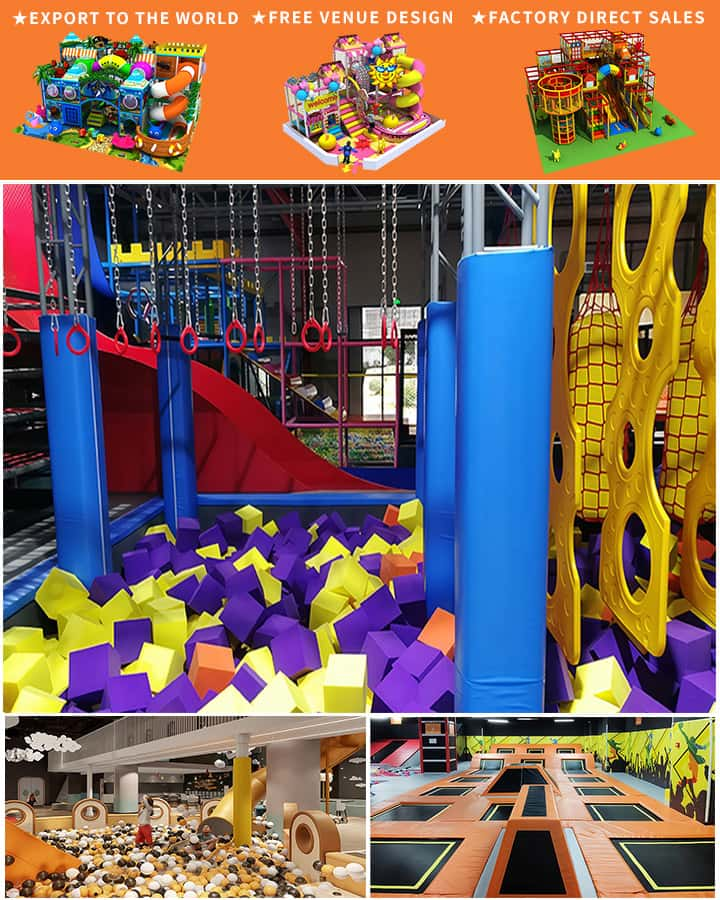Creating an indoor playground is an exciting venture that promises endless fun and developmental benefits for children. However, one of the most crucial aspects to consider is the cost. Whether you’re a parent looking to set up a play area at home or an entrepreneur planning to start an indoor playground business, understanding the various factors affecting the overall cost is essential for effective budgeting and planning.
Factors Affecting Indoor Playground Costs
- Location
- Space Rental or Lease: Depending on whether you are setting up at home or renting space elsewhere, costs can vary significantly. Urban areas tend to have higher rental rates compared to suburban or rural locations.
- Renovation Expenses: If the space requires any modifications to be suitable for an indoor playground, such as flooring, safety installations, or partitioning, this will add to your initial investment.
- Type and Size of Equipment
- Basic vs. Advanced Equipment: The cost of play equipment varies based on complexity and brand. Simple structures like ball pits, tunnels, and slides are typically less expensive than advanced interactive installations like obstacle courses or digital play systems.
- Customization: Custom-designed playgrounds tailored to specific themes or requirements often come with a higher price tag but offer unique appeal and functionality.

- Safety Features
- Cushioned Flooring: Installing safe, cushioned flooring is essential to prevent injuries from falls. Materials range from basic foam mats to high-end rubberized surfaces, each with different price points.
- Safety Barriers and Netting: Adding barriers and netting around high platforms or equipment ensures an extra level of security, albeit at an additional cost.
- Maintenance and Operational Costs
- Routine Maintenance: Regular upkeep is necessary to ensure the longevity and safety of the playground. This includes cleaning, checking for wear and tear, and occasionally replacing parts.
- Insurance: Protecting your investment with liability insurance is prudent, especially if the playground is open to the public. Premiums can vary depending on coverage limits and location.
- Additional Amenities
- Rest Areas and Catering: Comfortable seating areas and refreshment options can enhance the customer experience but also increase setup costs.
- Party Rooms and Events: Offering spaces for birthday parties or special events can be an added revenue stream but necessitates further investment in decor, tables, chairs, and other event-related supplies.
Budgeting Tips for Indoor Playgrounds
Prioritize Essentials: Identify must-have features and amenities before moving onto more luxurious options. Prioritizing helps in managing expenses without compromising on safety and fun.
Seek Cost-Effective Alternatives: Research suppliers for competitive pricing on bulk purchases or look into second-hand equipment that still meets safety standards.
Plan for Scalability: Begin with a modest setup and plan for gradual expansion as demand grows. This approach allows for better financial management and reduces initial overhead.
Leverage Technology: Utilize online tools and software for efficient management, booking systems, and marketing strategies which can reduce operational costs in the long run.
Engage Professionals: While DIY projects can save money, certain aspects like structural installations and electrical work should ideally be handled by professionals to avoid costly mistakes and ensure compliance with safety regulations.
Conclusion
Setting up an indoor playground requires thoughtful planning and consideration of multiple cost factors. Whether it’s a small-scale setup at home or a large commercial venture, understanding the variables involved in cost can help in making informed decisions and creating a successful, budget-friendly indoor playground. With proper budgeting and strategic investments, you can provide a safe and enjoyable environment that brings joy and laughter to children while maintaining financial viability.




